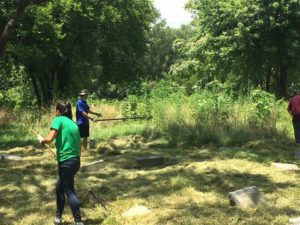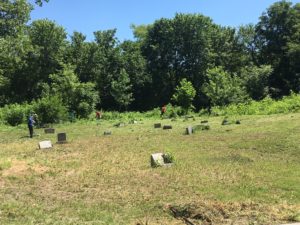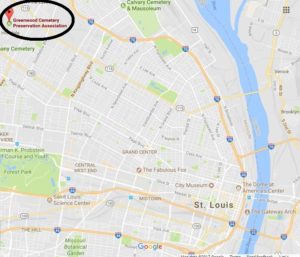Think for a moment. Beyond the things you own, what belongs to you? What are you owed? Are you entitled to be treated in a certain way, to be allowed access to certain groups, to enjoy certain privileges? My guess is that, in answering those questions, you would likely place very few restrictions on yourself. Don’t worry. You’re not alone in that. I would probably answer in much the same way.
In a previous “Jesus, Justice, Joy” article, I mentioned that newadvent.org defines justice as “—a moral quality or habit which perfects the will and inclines it to render to each and to all what belongs to them.” This past week, I found a new way to understand and appreciate the words, ‘what belongs to them’.
Greenwood Cemetery is located in north St. Louis, MO, in a village called Hillsdale.
Greenwood was an active cemetery from 1874 to 1993. As opposed to many other area cemeteries, Greenwood had no covenant barring African-Americans from being buried there, so it became one of the main resting places for the black community in St. Louis. Additionally, Greenwood was privately owned for much of it’s history with none of it’s owners ever bothering to establish an endowment for the upkeep of the grounds. Private ownership of Greenwood also meant that none of the five municipalities that touch the cemetery were legally responsible for it’s upkeep. (This is till true today.) The Foelsch family, who had bought the cemetery from original owner, Herman Krueger, ran the cemetery through the 1980s, selling it in 1993 to Soloman Rooks. Rooks had no true interest in maintaining the cemetery, though, and the property became overgrown and fell into disrepair. Preservation efforts began in 1999, but reclaiming Greenwood’s almost thirty-two acres has proven to be a daunting task. To date, only about a third of the grounds have been recovered. Whether attacked by thick weeds and brush, erosion, or vandals, Greenwood Cemetery is in sad shape.
I learned all of this last week during Young Neighbors in Action, where I was serving as the Prayer and Music Coordinator. Greenwood was one of our service sites. The teens assigned there cut down large weeds brush and also mowed. It’s hard to describe just how hard they had to work. Hopefully these pictures will tell the story.






It was easily the most physical work asked of any of our teens and they definitely rose to the challenge. When these teens returned each day from their work sites, we, the program staff, would help them process their experiences. This processing is designed to help them see these experiences through the lens of Catholic Social Teaching: Who are you are serving? What are their needs? How did they come to have these needs? What can be done to not only meet these needs now, but work towards ensuring that those needs can be met more consistently and justly in the future?
What the teens learned is that the poor conditions at Greenwood Cemetery are mostly the result of racism, carelessness, and greed. Greenwood’s plight seems to be an apt metaphor for how we treat those in the margins of society. Humanity and dignity of the poor, vulnerable, or otherwise cast-out seem to be of lesser value than of those who just happen to be of the right social class, ethnic background, or economic status. For many buried at Greenwood, the eternal fate of their bodies seems to have a lot to do with the fact that they just happened to die in St. Louis, while black.
The people buried at Greenwood Cemetery deserve dignity in death as they did in life. It is ‘what belongs to them’. It is just. The association caring for Greenwood these days is doing amazing work, but they need more help. This help can come in the form of a donation or volunteering your time to help recover the grounds. To learn more, click here.
-Shannon


2 comments for “Greenwood Cemetery”